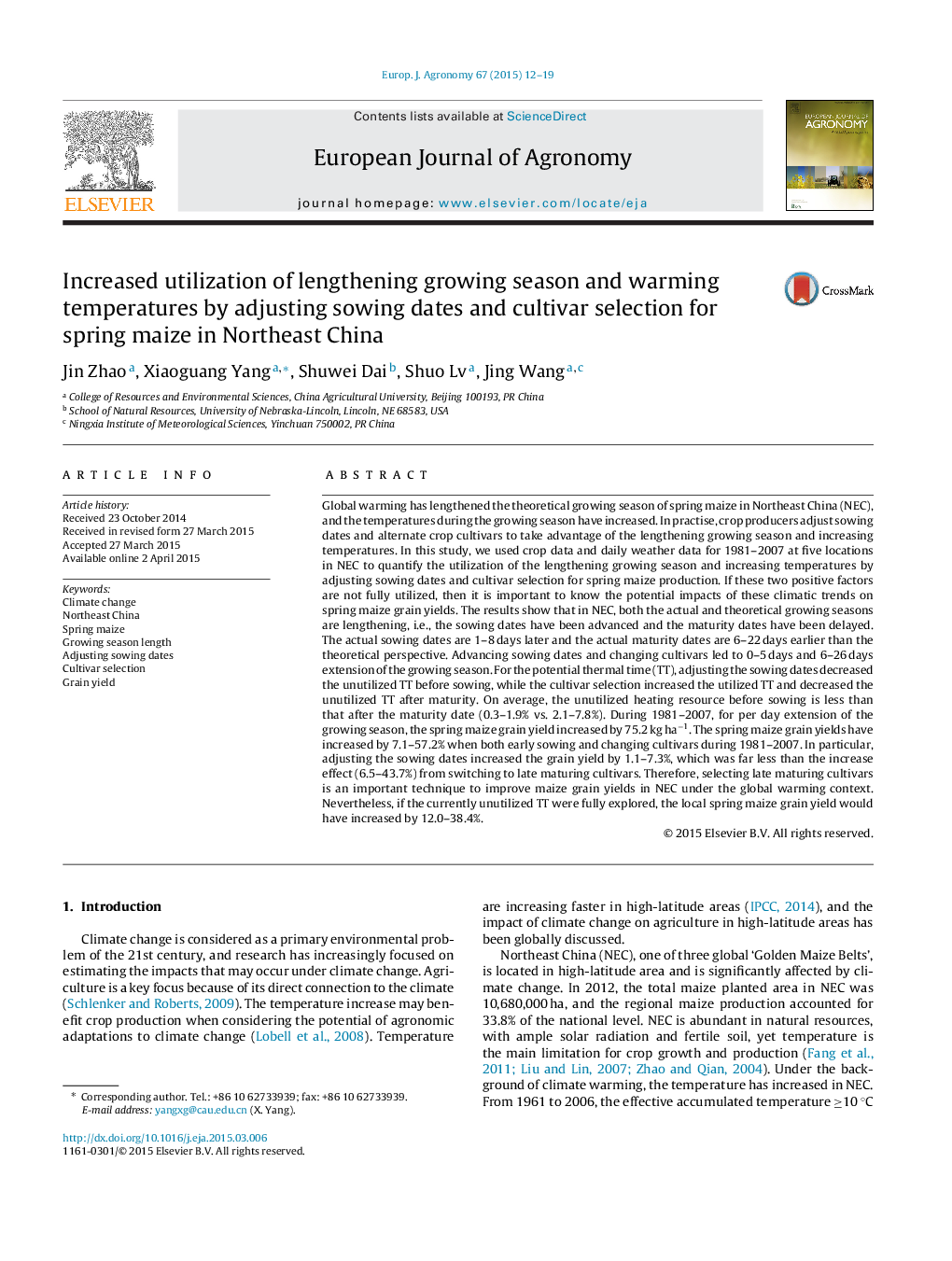| Article ID | Journal | Published Year | Pages | File Type |
|---|---|---|---|---|
| 4508864 | European Journal of Agronomy | 2015 | 8 Pages |
•Both the actual and theoretical growing seasons are lengthening in Northeast China.•Adjusting the sowing dates decreased the unutilized thermal time (TT) before sowing.•Cultivar selection increased the utilized TT and decreased the unutilized TT after maturity.•The increased grain yield by adjusting sowing dates far less than by switching to late maturing cultivars.•If the currently unutilized TT were fully explored, the local spring maize grain yield would have increased by 12.0–38.4%.
Global warming has lengthened the theoretical growing season of spring maize in Northeast China (NEC), and the temperatures during the growing season have increased. In practise, crop producers adjust sowing dates and alternate crop cultivars to take advantage of the lengthening growing season and increasing temperatures. In this study, we used crop data and daily weather data for 1981–2007 at five locations in NEC to quantify the utilization of the lengthening growing season and increasing temperatures by adjusting sowing dates and cultivar selection for spring maize production. If these two positive factors are not fully utilized, then it is important to know the potential impacts of these climatic trends on spring maize grain yields. The results show that in NEC, both the actual and theoretical growing seasons are lengthening, i.e., the sowing dates have been advanced and the maturity dates have been delayed. The actual sowing dates are 1–8 days later and the actual maturity dates are 6–22 days earlier than the theoretical perspective. Advancing sowing dates and changing cultivars led to 0–5 days and 6–26 days extension of the growing season. For the potential thermal time (TT), adjusting the sowing dates decreased the unutilized TT before sowing, while the cultivar selection increased the utilized TT and decreased the unutilized TT after maturity. On average, the unutilized heating resource before sowing is less than that after the maturity date (0.3–1.9% vs. 2.1–7.8%). During 1981–2007, for per day extension of the growing season, the spring maize grain yield increased by 75.2 kg ha−1. The spring maize grain yields have increased by 7.1–57.2% when both early sowing and changing cultivars during 1981–2007. In particular, adjusting the sowing dates increased the grain yield by 1.1–7.3%, which was far less than the increase effect (6.5–43.7%) from switching to late maturing cultivars. Therefore, selecting late maturing cultivars is an important technique to improve maize grain yields in NEC under the global warming context. Nevertheless, if the currently unutilized TT were fully explored, the local spring maize grain yield would have increased by 12.0–38.4%.
